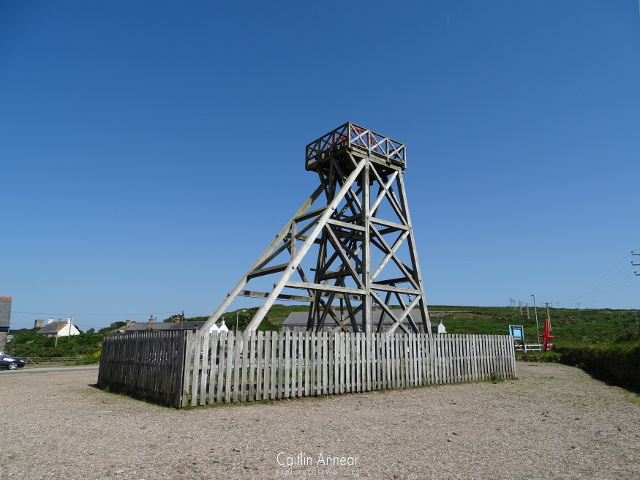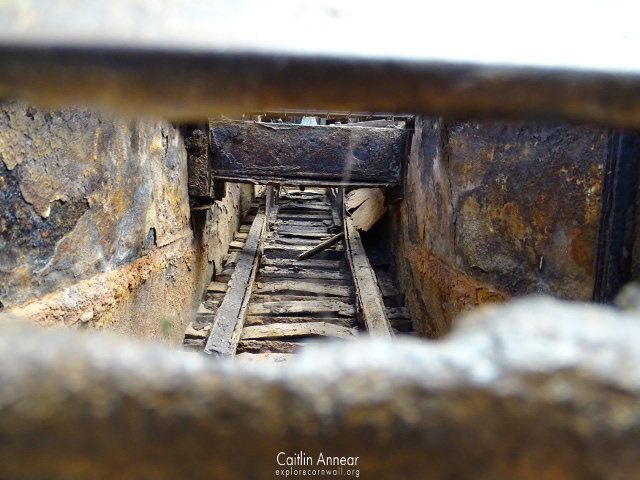On the north coast of Cornwall way down west is Geevor Mine, the countries best preserved mining complex.

Out of the thousands of mines that worked in Cornwall, by the 1990’s only three remained: South Crofty, Wheal Jane and Geevor. For what became such an illustrious and prosperous mine, it had modest beginnings. It started out as dozens of small operations which were eventually joined together, although unfortunately over time the newer workings obliterated the evidence of those that came before.

Records for this part of the country date back as far at the late 1400’s, with several small mines being registered at this time. In 1716 there was a mine named While an Giver (meaning mine of the goats) recorded; this would have sat somewhere near the present day carpark, with Wheal Mexico closer to the sea and Stennack mine slightly to the south-west. From 1791 Wheal Carne was at work, with this date having been cut into the rock of one of its tunnels.

In 1837 the Stennack section closed and was renamed East Levant, possibly an attempt to improve its success by associating itself with its profitable neighbour. It wasn’t long before the whole section along with East Levant was amalgamated to form North Levant. Unfortunately like so many other mines around Cornwall, Geevor Mine was no exception when it came to disaster and injury. During 1867 three miners drowned when workings between Wheal Bal and Wheal Maitland intersected with those of North Levant, flooding the shaft.
The mine continued on until closing in 1891, only to reopen the following year as Wheal Geevor. In 1905 it was taken over by West Australian Goldfields Co Ltd and named North Levant and Geevor Ltd; sections of the mine was cleared and new timbers installed. This was shortlived and by 1911 it was once again rebranded, this time as Geevor Tin Mines Ltd, a sett that included neighbours North Levant and Wheal Carne. Following the end of WWI, it was decided to begin sinking a new shaft, named Victory, which became the centre of the workings from this point forward.

When nearby Levant mine closed in 1930, Geevor was quick to take it up, along with Boscaswell Downs and Pendeen Consols a bit later in 1937. By the 1950’s Geevor Mine had started to exhaust the tin in their section of the area and began to set their sights out under the sea just as Levant had done. Over the next ten years they went about plugging a breach in Levant where the sea had entered, then pumped it out down the 190 fathom (347m) level; however this proved to be fruitless and was allowed to flood again. Instead they decided to start on a new sub-incline for Victory shaft. Work on this began in 1975 and took the shaft from its original depth of 1,575 ft (480m) down to 2,130 ft (650m).
This was initially profitable, but in 1985 disaster struck when the price of tin plummeted. The mine temporarily closed April 1986, reopened the following year in a reduced capacity and was only an exercise to remove the broken ore that remained in the stopes with a greatly reduced workforce. In 1988 tin prices increased again, giving the mine a glimmer of hope, but this was short lived. In 1990 all of the miners were laid off and the mine was maintained with a skeleton crew. By May of 1991 the decision was made to turn off the pumps and to close the mine completely.

Carne (680 ft/m), Wethered (794ft/m), Victory (1,575ft/480m vertical and 2,130ft/650m incline), Trease, Stennack (115 fathoms/210m), Law’s (150 fathoms/274m), Wheal Game (60 fathoms/110m), Long Tom (30 fathoms/55m), Down (60 fathoms/110m), New Mexico (280ft/85m), Goldsworthy’s, Pig, Robert’s, Treweek’s, Thorne’s, Ladderway, Comrades, Old Mexico and Rock.
Pig, North Pig, South Pig, Caunter, Jumbo, North, Coronation, Hangingwall Branch, A, D, Boscaswell Downs, New, Blue, Hunt’s, Stennack, North Stennack, South Stennack, East Levant, Borlase’s, Feen, Grand Cannon, Hard, Mundic, No 1, No 2, No 3, Peeth and Simms.
Over 50,000 tons (50,802,345 kg) of black tin




For such a complete site, its a real shame that there are no remaining engine houses, except the stumps of a few. The first was likely a 20″ engine at Wheal Stennack installed at 1815. In 1840 the 20″ engine was sold alongside a whim, both of these were on Law’s shaft. A 45″ pumping and winding engine was erected on Law’s shaft in 1864, and another whim, this time a 24″ was at work by 1891. Closer to Trewellards Bottom is the remaining chimney of a horizontal engine, likely from between 1880-1908.

Access is available to everyone with ticketed entry – this is to the Wheal Mexico section of the mine. Some parts of the mine, particularly the underground experience may be difficult for those with mobility issues.
There is a large free carpark on site.
Brown, K. and Acton, B. (1997) Exploring Cornish Mines: Volume Three. Truro: Landfall Publications.
Buckley, J. A., Wills, D. and Riekstins, K. T. (1996) Geevor Mine Underground. Camborne: Penhellick Publications.
Dines, H. G. (1956) The metalliferous mining regions of south-west England. British Geological Survey.
Geevor – Our History (2021). Available at: https://geevor.com/whats-here/our-history/.
Sharpe, A. (1993) St Just: An archaeological survey of the mining district volume II. Available at: http://map.cornwall.gov.uk/reports_event_record/1992/1992R032.pdf (Accessed: 30 August 2019).
Sharpe, A. (2008) Geevor and Levant, Cornwall Historical landscape development. Available at: http://map.cornwall.gov.uk/reports_event_record/2008/2008R059.pdf (Accessed: 30 August 2019).
‘Signs at Geevor’ (2019).







worth mentioning there is no underground access to Geevors workings, the underground tour is an associated small mine Wheal Mexico